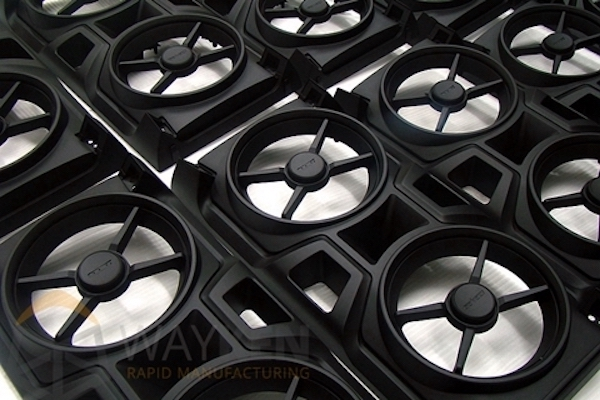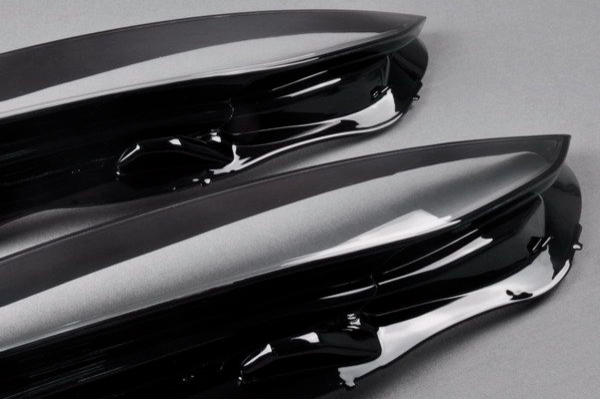
Vacuum casting parts are integral components of various marine structures. Due to their ability to withstand harsh environmental conditions, resistance to wear and tear, and high structural integrity. From the manufacturing of turbine wheels to aerodynamic propeller manufacturing they contribute to maximizing efficiency, reliability, and sustainability in maritime propulsion systems. Further in this article, we will explore, how manufacturers by using this advanced manufacturing technique produce vacuum casting parts for the turbine Wheel of the marine turbocharger.
Rotor Assembly Balancing via Lost-Wax Vacuum Casting Parts
Exceptional balance and reliability are essential in marine turbochargers where components operate at high RPMS under significant load conditions. The precision casting procedure of the lost-wax casting process ensures uniform material distribution without any porosity. This will minimize areas of uneven weight distribution in the overall structure which can lead to an imbalance. The manufacturing process of rotor assembly begins with the creation of a wax pattern. Which is designed as per the design of the rotor. This wax pattern is then coated with a refractory material so that it will form the shape of the mold and create an impression of the mold. Once the mold structure is completely designed, it will be heated until the wax pattern is melted completely and a hollow cavity is left behind that truly mirrors the shape of the original pattern.
After that molten metal which is mostly high-strength alloys like nickel-based super alloys or titanium alloys is used. These materials are chosen for their high strength and resistance to wear and tear. The molten metal is poured under vacuum conditions so that it ensures complete filling and minimizes defects. The lost wax casting process for rotor assembly is more favorable than die casting or sand casting. These casting techniques are more prone to defects such as porosity or shrinkage which affects the overall balance and causes vibrations for certain conditions. Moreover, the idea of removing the wax pattern before casting eliminated potential imperfections of uneven material distribution. As a result, supported intricate designs enhanced the real ability of wheels, and made it demanding for marine turbochargers.
Blade Profiles for Enhanced Aerodynamics Through Investment Casting
The investment casting procedure offers several advantages in its manufacturing of turbine blades as it allows the production of complex geometries thin-walled sections in the mold designs. This capability is crucial for achieving smooth and aerodynamic airflow around the turbine blades, which results in energy conversion efficiency and improves overall system performance. The manufacturing technique of investment casting is almost similar to low wax casting. However, in investment casting a full-size wax pattern is created that will precisely be coated with ceramics to form a mold. While in low wax casting thin structures and easily removable wax mold is created.
The wax pattern created for vacuum investment casting undergoes several coatings of ceramic slurry and refractory material. This will make the mold capable of bearing extreme pressure and high-temperature conditions. The wax mold is dipped in the slurry and allowed to dry for some time, then the process is repeated again and again until it gains a certain thickness of the coating as desired. This ceramic mold also increases the precision and surface finishing of the end product in manufacturing.
Molten metals such as stainless steel or nickel-based superalloys are poured in to the mold under vacuum conditions. The metal is allowed to cool and solidify with in the mold before the ceramic shell is broken. The precise control over blade manufacturing allows for fine adjustments in blade curvature, twist, and surface contouring. This will ultimately lead to more efficient energy extraction from exhaust gases.
Lightweighting Turbine Design with Vacuum Hot Pressing
Weight reduction is the most important paramount in turbine wheel geometry. It reduces the overall inertia and improves the response time and system efficiency. Lightweight designs ensure reduced fuel consumption and emissions and make marine vessels more environmentally friendly and economically viable. The manufacturing process of turbine wheels often uses a vacuum hot casting procedure for obtaining these lightweight designs. In this process powder metal or its alloys, specifically high-strength alloys such as Cobalt-based superalloys and iron-based alloys are used as per specific working conditions. The Powder metals are then blended so that they ensure homogeneity and consistency in composition.
The powder metal is then poured on to the mold cavity and subjected to extreme pressure and heat. For hot pressing temperature ranges from 900°C to 1300°C and pressure ranges from 100 MPa to 500 MPa. The high temperature softens the powder metallic particles and allows them to deform and take the shape of the mold. The melting and solidification process in such a controlled environment helps in the formation of a solid turbine wheel in which grains are densely packed with minimal porosity and high structural integrity.
Throughout the whole vacuum casting process, precise control over temperature and pressure is extremely needed. Specifically in the solidification process, the range of temperature and pressure helps to attain the desired material density and microstructure that can face extreme marine environmental conditions. After the solidification process the turbine wheel is carefully removed from the mold and surface treatment processes are done through precision machining techniques like multi-axis machinery or CNC machines so that one can attain desired performer specifications.
Maximizing Turbine Efficiency with Vacuum Plasma Sprayed Coating
The vacuum plasma coating technique ensures consistent performers of marine turbochargers. As it acts as a barrier against corrosion, erosion, and high-temperature degradation. This technique involves several steps. Firstly, the turbine wheel is thoroughly cleaned so that surface irregularities or contaminations are removed. Otherwise, it may affect the adhesion of the coating. After that, the Turbine wheel is mounted in a vacuum chamber
Once the pre-manufacturing procedures are completed, metallic alloys are fed into the plasma torch. The torch has a temperature range of up to 10,000°C. This high temperature range melts all the Powder metallic alloys and forms of Plasma stream. The plasma stream is spray-directed toward the surface of the turbine wheels.
As this molten plasma impacts the surface of the turbine it rapidly solidifies. Repeating this procedure 2 to 3 times make a thick layer of coating on the surface of the wheel and blades. The process must be carefully monitored and the turbine wheel is rotated and repositioned so that a fine coating is obtained. The coatings are not only necessary for surface treatment but also to improve their aerodynamic efficiency. Once the desired thickness value is obtained which is mostly from 50 to 200 microns. The turbine wheel is slowly cooled to room temperature.
Conclusion
Summing things up, vacuum casting provides the ultimate solution for creating turbine wheels for marine turbochargers. The use of vacuum casting parts ensures precise balance, customizable designs, and lightweight structures. However, if you are looking for a manufacturing service you should consider the technology and manufacturing capability like vacuum chambers and technical expertise of your chosen machine shop.

